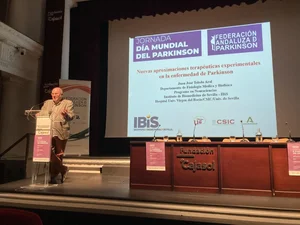Fertility Concerns in Spain: A Growing Issue for Expats and Nationals Alike
As the year 2024 begins, Spain is grappling with a significant demographic challenge that has far-reaching implications for both its native population and expat community: a persistently low fertility rate.
Low Fertility Rates
Spain has one of the lowest fertility rates in the European Union. In 2023, the country's fertility rate stood at approximately 1.29 children per woman, significantly below the replacement rate of 2.1 children per woman necessary to maintain a stable population[1][3].
Regional Variations
The birth rate varies significantly across different autonomous communities in Spain. Melilla, a Spanish city on the northern coast of Africa, had the highest birth rate in 2023 with 8.99 births per 1,000 inhabitants, while Asturias recorded the lowest with 4.51 births per 1,000 inhabitants[1].
Delayed Motherhood
A notable trend in Spain is the increasing age of mothers at childbirth. Spain has the second-highest average age of women at childbirth in Europe, with an average age of 32.6 years for all births and 31.6 years for first-time mothers in 2022. A significant 11% of live births in Spain are to mothers aged 40 or older, a figure much higher than in countries like the United States, where only about 4% of live births are to women over 40[2].
Factors Contributing to Delayed Motherhood
Financial insecurity and the pursuit of higher education and career goals are key factors driving this trend. Spain's high unemployment and youth unemployment rates, combined with low wages and financial instability, lead many women to delay motherhood until they are more financially secure. The accessibility of fertility treatments, including free IVF for women under 40, also plays a crucial role in enabling women to have children later in life[2].
Impact of Public Healthcare
Spain's robust public healthcare system is another critical factor. The system provides excellent medical care, which reduces the perceived risks associated with advanced-age pregnancies. This confidence in the healthcare system encourages women to delay motherhood without significant concerns about the health implications[2].
Changing Family Dynamics
The traditional family structure is also evolving. Many Spanish women are choosing to become single mothers, with a growing number seeking fertility treatments without a partner. This trend is supported by the availability of fertility services and the societal acceptance of single parenthood[2].
Population Growth Despite Low Birth Rates
Despite the low fertility rates, Spain's population is expected to increase due to net migration. After experiencing a period of emigration following the 2008 financial crisis, Spain has become a net recipient of foreign immigration since 2015. This influx of immigrants has contributed to the slow upward trend in Spain's population, which was around 48.4 million people in 2024 and is forecast to continue growing until at least 2028[1].
Conclusion
The fertility challenges in Spain are complex and multifaceted, influenced by economic, social, and healthcare factors. As expats and nationals navigate these demographic shifts, it is clear that Spain's population dynamics will continue to evolve, shaped by both internal trends and external migration patterns. Understanding these changes is crucial for planning and policy-making to ensure the well-being and sustainability of Spain's population in the years to come.
About MovetoSpain.es
MovetoSpain.es is an independent data website that helps people move to, live in, and integrate into Spain. We use AI to gather data from around the web to provide you with the most up-to-date information.
Sources for this story:
Related Stories

New Horizon for Parkinson’s Patients in Spain
April 29, 2025

Crisis in Primary Care: Spain's Health System Under Strain
April 12, 2025

Pollen Allergies Arrive Early in Cantabria, Expected to be Mild
March 21, 2025

Precision Medicine Project in the Canary Islands: Cohorte Impact Surpasses 500 Participants
March 10, 2025

Significant Investments in COVID-19 Research: A Global and European Perspective
March 9, 2025
EuroMillions Results in Spain for Tuesday 11th
Tuesday, November 11th, 2025
Subscribe to Our Newsletter
Stay updated with the latest news and stories from Spain.
